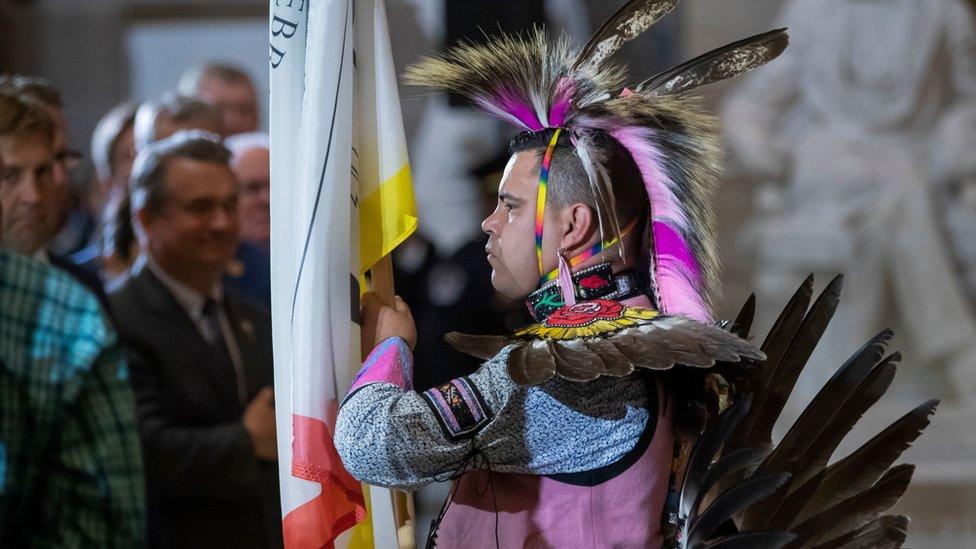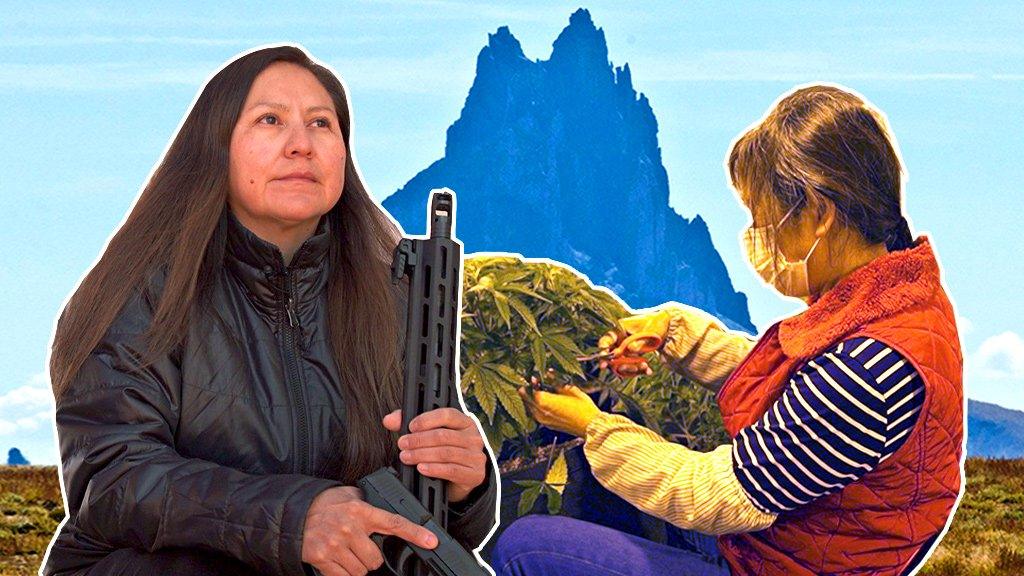500 acres of California forestland returned to indigenous tribes
- Published

A redwood at Tc’ih-Léh-Dûñ
A group of native tribes in California has regained ownership of more than 500 acres of redwood forestland they were forcibly removed from centuries ago.
Save the Redwoods League, a non-profit, said the property is now owned by the Sinkyone Council, which represents "the original stewards of this land".
Formerly known as Andersonia West, the forest in Mendocino County will return to its original name: Tc'ih-Léh-Dûñ.
The name translates to "Fish Run Place" in the Sinkyone language.
"Renaming the property Tc'ih-Léh-Dûñ lets people know that it's a sacred place; it's a place for our Native people," said Crista Ray, a board member of the Sinkyone Council, in a statement on Tuesday.
"It lets them know that there was a language and that there was a people who lived there long before now."
A habitat corridor critical to many endangered species and home to towering old-growth redwoods , Tc'ih-Léh-Dûñ now adds to about 180,000 acres of protected lands along the Sinkyone coast.
This is the second time Save the Redwoods League has entered into a conservation agreement with the Sinkyone tribes.
In 2012, it donated 164 acres of redwood - just north of Tc'ih-Léh-Dûñ - to them.
"We believe the best way to permanently protect and heal this land is through tribal stewardship," said the League's president and CEO Sam Hodder in a statement.
"In this process, we have an opportunity to restore balance in the ecosystem and in the communities connected to it, while also accelerating the pace and scale of conserving California's iconic redwood forests."
The Council and League plan to apply "a blend of Indigenous place-based land guardianship principles, conservation science, climate adaptation and fire resiliency concepts and approaches" to the newly tribal land.
The League bought the land in 2020 for $3.55m (£2.63m) through a conservation program set up by the Pacific Gas & Electricity utility company, one of the state's largest private landowners.
Related topics
- Published10 July 2020

- Published14 September 2021

- Published9 May 2021
